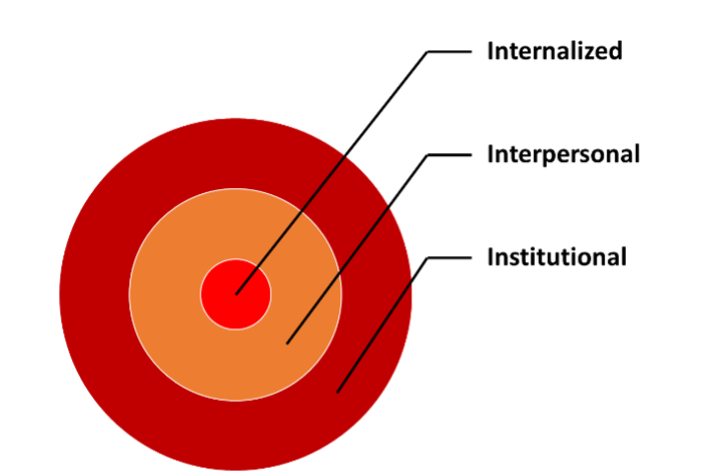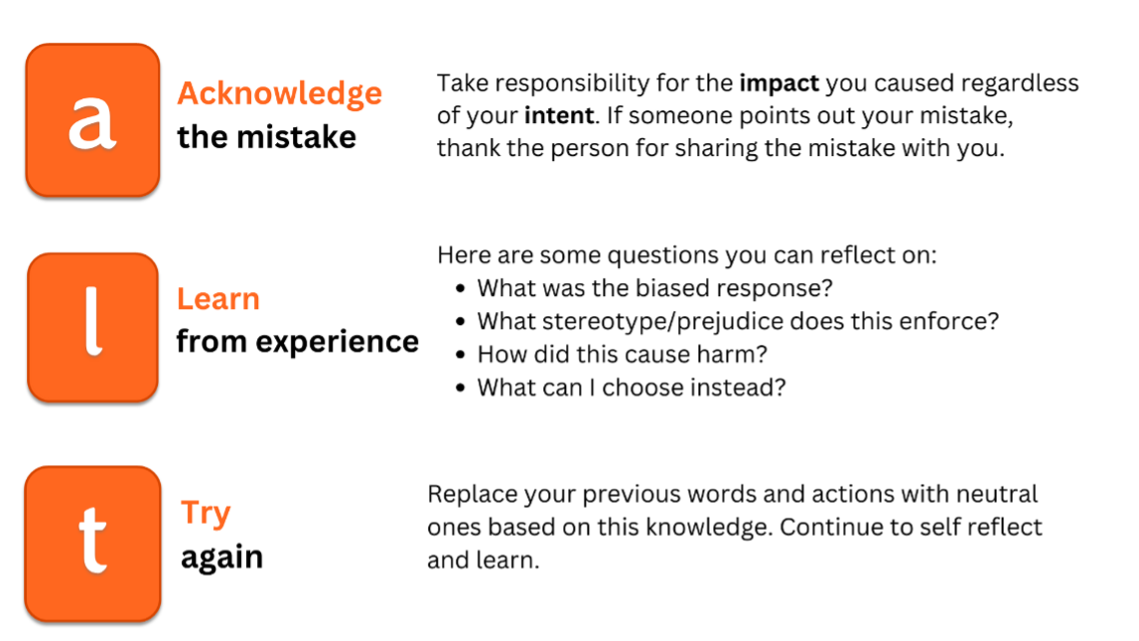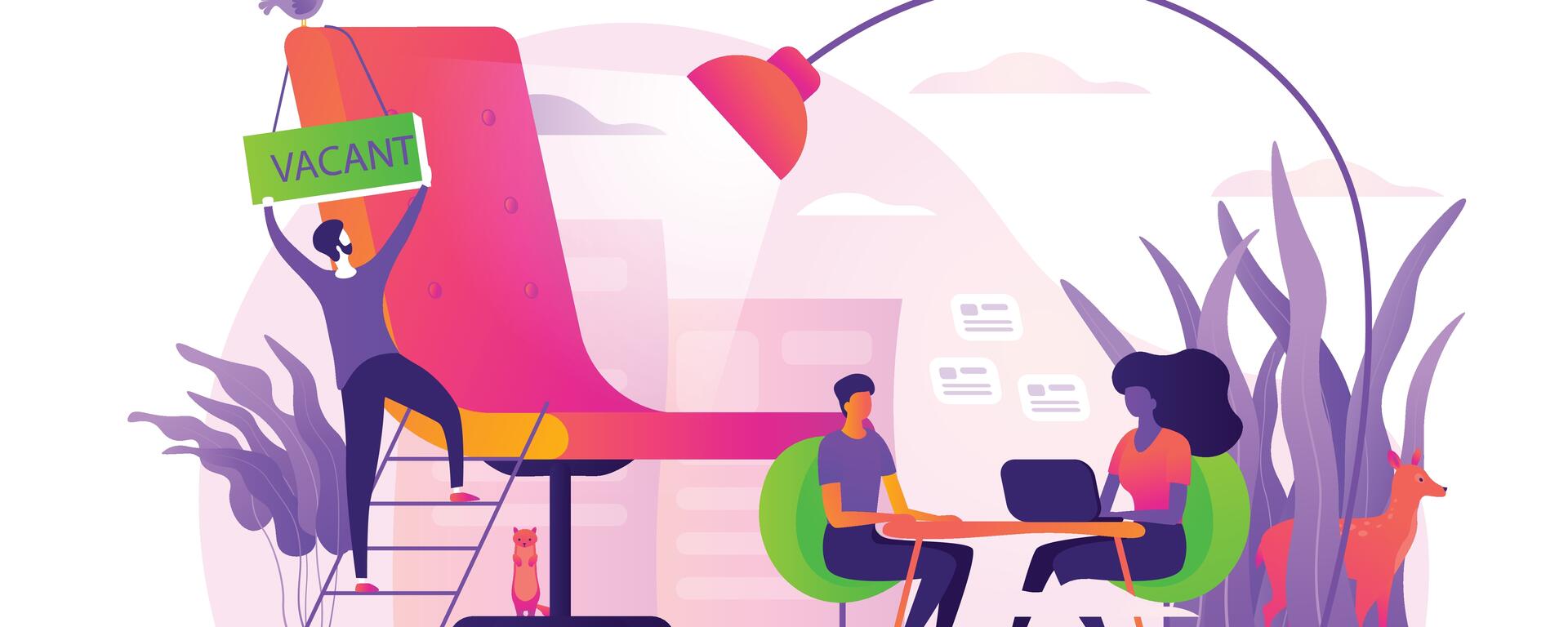What is bias? What are the different types of bias in hiring?
Narrated by Kenna Kelly-Turner
Bias can be enacted on different levels
- Internalized biases lie within individuals. This can take many forms including holding prejudice towards those who are different from us, or negative beliefs about oneself.
- Interpersonal biases occur when we interact with others and our bias affects those interactions.
- Institutional biases can be reflected in the policies and practices of institutions and the society that produce inequitable outcomes for equity deserving groups

To mitigate the impact of individual biases, we must:
Acknowledge Bias
The first step is acknowledging that we all have bias. Acknowledging and challenging our biases can be an uncomfortable process. And that is okay! Learning often happens through discomfort.
Engage in Self Reflection
Consider identifying the environments that may perpetuate your bias. Slow down your automated thinking process, take your time and deliberately and challenge your thoughts and assumptions.
Continue Learning
Learning and unlearning is a lifelong process. The University of Calgary and Cumming School of medicine offer a variety of educational opportunities for you to learn more EDIA topics. Here are some opportunities you may consider:
•Office of Faculty Development and Performance (OFDP) offerings

Remember that being deliberate is unlikely to erase all impacts of biases, especially in cases where norms and structures are difficult to challenge, but it can mitigate some of these impacts, and that's a first step.
By remaining open and continuing to question your approach and the approach of your peers, we have the best chance to increase diversity and inclusivity at the Cumming School of Medicine.
Reflection Question
With the understanding of bias from this module, reflect on a time when unconscious biases may have influenced your decision making. What stereotypes did this enforce? What could you have done differently?
Further Resources for Learning
Declaration of Research Assessment (DORA) Unintended Biases
Study: Science Faculty's subtle gender bias favors male students
How Gender and Race Stereotypes Impact the Advancement of Scholars in STEM
The necktie syndrome: Why CEOs tend to be significantly taller than the average male

